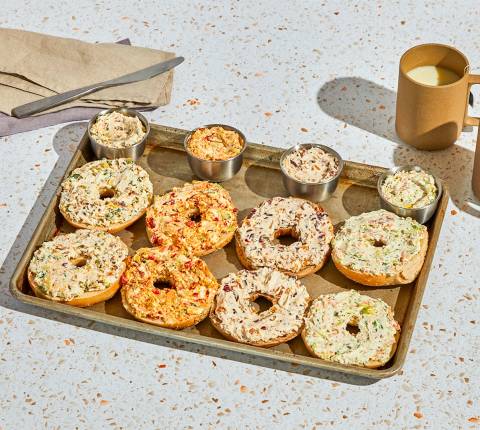The poke craze is upon us, and for good reason. In Hawaiian, the word “poke” translates roughly to “cut into chunks,” and these marinated chunks of seafood are the perfect summer meal — refreshing, satisfying, and super flavorful. In Hawaii, you’ll find poke pretty much everywhere, in gas stations and supermarkets, at boisterous tailgates and fancy weddings and roadside stands. And on the mainland, there are more solid poke options than ever before.
“Poke is an excellent dish to introduce diners to raw fish,” says Ren Ostry, who supplies Los Angeles-area restaurants with premium seafood as a sales representative for Four Star Seafood. “Poke provides bright flavors and delicious textures. It's a protein-rich, easy-to-eat meal on the go.”
Legend has it that the dish was born when Hawaii’s fishermen would slice pieces from their just-caught fish and season it with whatever ingredients they had on hand, maybe some seaweed or soy sauce, perhaps a little sesame oil or kukui nuts.
Some of these ingredients are native to the island, and some were introduced over the years. When ships from the West Coast arrived in local Hawaiian ports, sailors traded salt for fresh Hawaiian salmon. Immigrants from China and Japan introduced soy sauce and sesame oil. Hawaii’s cuisine today reflects its rich, layered geography and history, with influences from Japan, China, the Philippines, Tahiti, Portugal, and the mainland. Poke, like Hawaii, is a dish that constantly evolves.
The classic poke consists of bite-sized cubes of raw ahi tuna or cured octopus in some combination of soy sauce, sesame oil, seaweed, spring onions, and kukui nuts, but there are as many variations as there are fish in the sea. (Or, nearly!) Rich Schiff, VP of Sales at Acme Smoked Fish, says he “loves the variety of ingredients, textures and tastes” poke offers.
It’s a delicious evolution. Plenty of spots (Poke Bay in Brooklyn, All About Poke in LA, to name just two) offer build-your-own poke bowls, where diners can choose from salmon, tuna, shrimp, and beyond — even veggie options like tofu or avocado — and layer on rice, greens, seaweed salad, edamame, and a lineup of sauces as long as the chef’s imagination. When it comes to topping and dressing your poke, practically nothing is off limits. Think fish eggs, sweet summer corn, and spicy Japanese ginger. According to Schiff, “people definitely get passionate about their creations, just as they do at the sandwich shop.”

There’s something inherently playful about poke, hinted at by some of the pun-heavy restaurant names. Tacoma, Washington's Sam Choy's Poke to the Max serves up poke in bowl, salad, or nacho form, with fresh fish atop house-fried tortilla chips, drizzled generously with spicy aioli, unagi sauce, furikaki, cilantro, and jalapeño. Phoenix’s Pokitrition sells sushi burritos alongside its poke bowls. At Domoishi Poke, Ramen, Tea in Virgina, you can dig into poke (starring proteins such as salmon, tofu, or spicy tuna) and add an order of taro milk boba tea.
Search and you might find poke tacos, poke tostados, and even haute poke on more upscale menus, like at Seamore's in Manhattan.
Whatever the incarnation, it’s super-fresh fish that’s at the heart of poke, and not always the fish you’re thinking of. “Almost 80% of the American seafood diet is made up of just three types of seafood: shrimp, salmon, and tuna,” Ostry says. “While shrimp, salmon, and tuna are under major pressure to meet consumer's demands, the wave of creative and innovative poke ingredients gives consumers the chance to expand their seafood palate.” She suggests trying a new seafood in your next poke bowl to take pressure off of the big three, and because there are some underrated, incredibly delicious fish out there.
Ostry loves surimi (imitation crab) salad, “which isn't actually crab, but pollock,” she explains. “Pollock is abundant, easy to process, and mild in taste. This is a great example of taking a dish we love (like poke) and replacing the ingredients with something more abundant and sustainable.” Scallops are another great option that’s considered “best choice” by the Monterey Bay Aquarium's Seafood Watch. Ostry particularly likes small bay scallops in his poke because, as she says, “they're tender and succulent with a buttery taste.”
Whether it’s with scallops or tuna, simply dressed or fully loaded, poke is the ideal meal for those days when it’s too hot to think about cooking.






